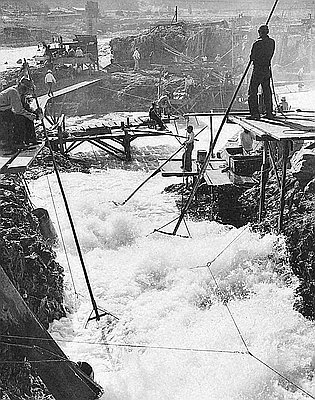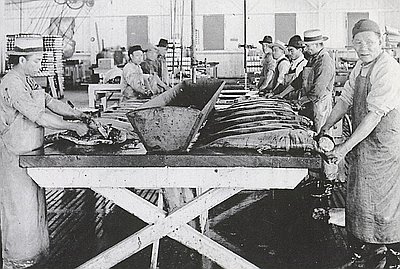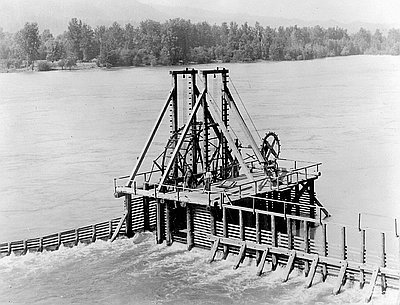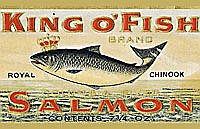Old photographs and rotten piers of Columbia River canneries have become monuments to a lost era. They stand as symbols of ethnic communities, gritty laborers, industrial efficiency, and profligate waste, yet they also represent a complex union of natural and cultural systems. Like all fisheries, the salmon canneries depended on intact and stable habitat. For millennia the region’s robust environment enabled salmon runs to withstand heavy fishing by extraordinarily large and sedentary hunter-gatherer societies, but the changes that Euro-American settlers made to the Columbia River watershed undermined this ecosystem. Farming, mining, logging, and urban and river development eroded the watershed on all sides. Meanwhile the industrial fishery relentlessly strained the river. The environmental impact of these activities was complex, harming some runs and benefiting others, but the ultimate result was dramatic. Spawning and rearing habitat was relentlessly degraded, and with it went the natural foundations of the salmon fisheries.
The history of Columbia River canneries is more than a tale of environmental decline, however. Fisheries are also cultural systems. People have harvested Columbia salmon intensively for five thousand years, and Indian and non-Indian fishers alike have used hooks, spears, dipnets, gillnets, seines, weirs, and baskets. The technological differences of this gear often mattered less than the motives of the users. Aboriginal fishers harvested for local consumption and regional trade. Dried salmon fed people and solidified kinship and trade relations, these fish generally spoiled within six months of capture. Thus technology and economy compelled Indians to capture only as much salmon as could be eaten within a few months.
No such fetters applied to the industrial fishery. Euro-Americans harvested for the marketplace rather than the cupboard, and refinements to canning and transportation systems enabled entrepreneurs to preserve salmon in cans and sell them anywhere in the world. Moreover, the industrial fishery did this within a culture that resisted all efforts at regulating fishing, logging, mining, farming, or urban development. The American West emerged simultaneously with industrialization and laissez-faire governance, and the result was an era of opportunity and profound change. The cultural systems under which Columbia River canneries operated were as important as the ecological systems upon which it depended.
© Joseph E. Taylor III, 2006. Updated and revised by OHP staff, 2014.





